7 Lines of Defense Against Pests Taught by the Forest Garden Approach
Change is Needed
Pests in the form of diseases, insects, weeds and wildlife are constantly attacking agricultural crops across the developing world where the vast majority of people are dependent on farming for their livelihoods. Pests have the easiest time decimating pure monocultures of crops where they can spread from plant to plant.
Global pest problems seem to be getting worse each year. The intensification of agriculture has intensified our pest problems in recent decades. In addition, regional warming trends, changes in weather patterns, and extensive deforestation are all helping pests spread faster.
As the Green Revolution mentality (growing improved seed varieties with chemical fertilizers and insecticides) spread around the world over the last 75 years, so spread the pests which thrive on large monocultures of food crops. The extent of such uncontrolled spreading can be seen with, Tuta absoluta, a leaf miner native to South America, hopped from farm to farm until it now threatens farmers across the globe. Armyworms continue to spread and infest monocultures of maize, peppers, and other crops in just about every agricultural zone on the planet. Using Green Revolution farming techniques, millions of farmers worldwide have cleared, intensified and degraded their fields, leaving themselves even more vulnerable to pestilence.
If you think that our technical savviness and love of innovation will continually save global food systems for the hundreds or thousands of years we expect to survive on this planet, you are wrong. The only way to ‘Feed the Future’ and fend off the increasing and changing patterns of agricultural pests and diseases is by building the natural pest resilience of farms around the world.
Integrated Pest Management (IPM) “is an ecosystem-based strategy that focuses on long-term prevention of pests or their damage through a combination of techniques such as biological control, habitat manipulation, modification of cultural practices, and use of resistant varieties.”
As we work with thousands of farmers around the globe, we find they universally appreciate the intention of Integrated Pest Management – but they do not know how to put it into practice. There are plenty of IPM resources across the Internet, but most are limited by their narrow focus on natural pesticides and treatments for insect infestation. It is important to understand that finding natural treatments for insects is only the tip of the iceberg when it comes to IPM. There are so many more components involved!
By using the Forest Garden Approach, farmers are guided through a planning methodology that builds their farm’s pest resilience and makes treatment the last line of defense, not the first. The following are seven lines of defense that our farmers learn to put in place to make their farms naturally pest-resilient:
Defense 1: Segment the Field with Barriers
Jatropha curcas helps form a Green Wall around a field.
The first step in the Forest Garden Approach is to protect the field. First, we train farmers to plant a Green Wall around the farm to keep out animals such as goats, sheep and cattle. Our Green Walls have proven to keep hippopotami in Senegal out of crop fields. You can even keep elephants out too if you add bee hives or chili pepper plants all round the Green Wall! Once farmers have a wall of trees around their field, we teach them how to plant rows of agroforestry trees across their farms to protect from erosion and improve soils. On a one-hectare farm, there may be 3-6 rows of trees crossing the field, depending on the size and slope of the field. The slope of the field usually tells you which orientation your rows of trees should be planted. If a farmer’s field is on a slope, then rows of trees should follow the contour of the slope of the land. A series of contour rows will divide the field into bands or segments down the hillside. If the field is on flat land, then rows of nitrogen-fixing trees should be planted across the field in alleys from East to West in line with the sun so the farmer can grow crops among the rows.
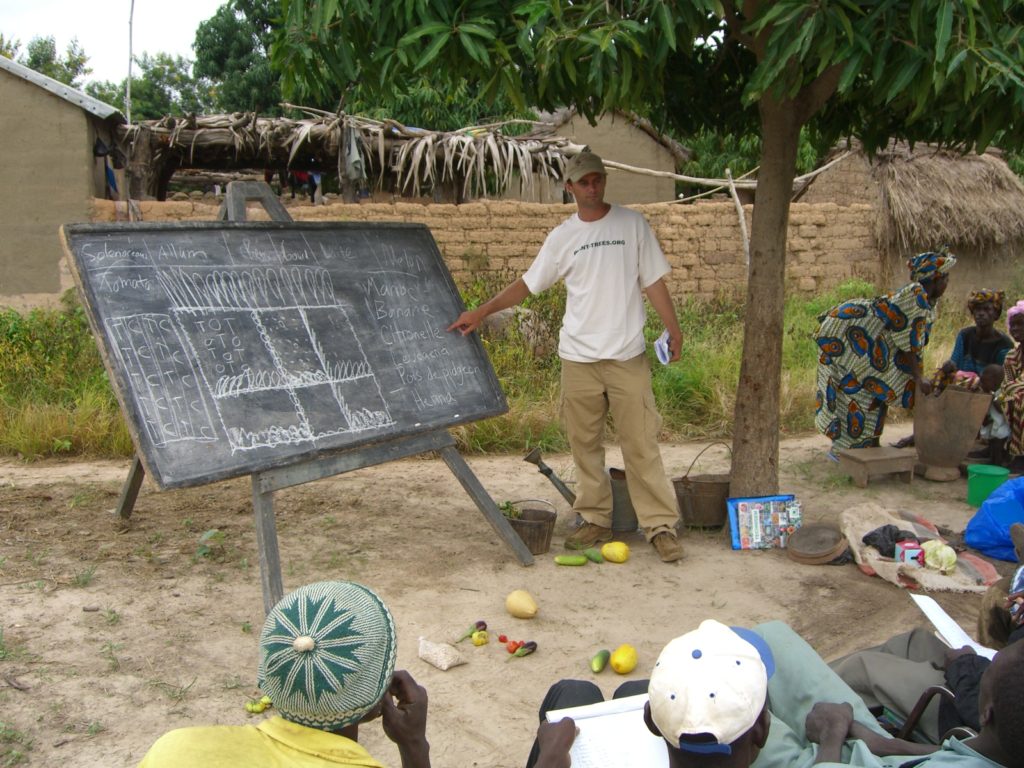 TREES Executive Director John Leary giving a field segmentation and crop rotation workshop for farmers in Mali in 2006.
TREES Executive Director John Leary giving a field segmentation and crop rotation workshop for farmers in Mali in 2006.
Once a field is surrounded with the Green Wall around the perimeter and sectioned with bands of trees across the field, we work with farmers to segment and protect the garden areas in a similar way using grasses and perennials. If the farmer has earthworks in place to manage water flow around the garden, perennials can be planted to hold them in place. To make it even more difficult for dirt-level pests to find the garden, farmers should consider planting walls of vetiver or lemon grass around the gardens. Not only do these vegetative barriers protect the field from a variety of pests, but they also provide habitat for beneficial insects, birds, lizards, and bats which feed off of the pests (See Defense #4). Imagine a hungry caterpillar crawling along the ground on its way to eat some fresh crops. It runs into a wall of vetiver grass that it cannot walk through or climb over. With no other option but to attempt to struggle through the sandpaper textured grassy barrier, the caterpillar slowly being its move, only to be swooped up and eating by a bird, never to bother the farmer again.
Defense 2: Select the Best Varieties
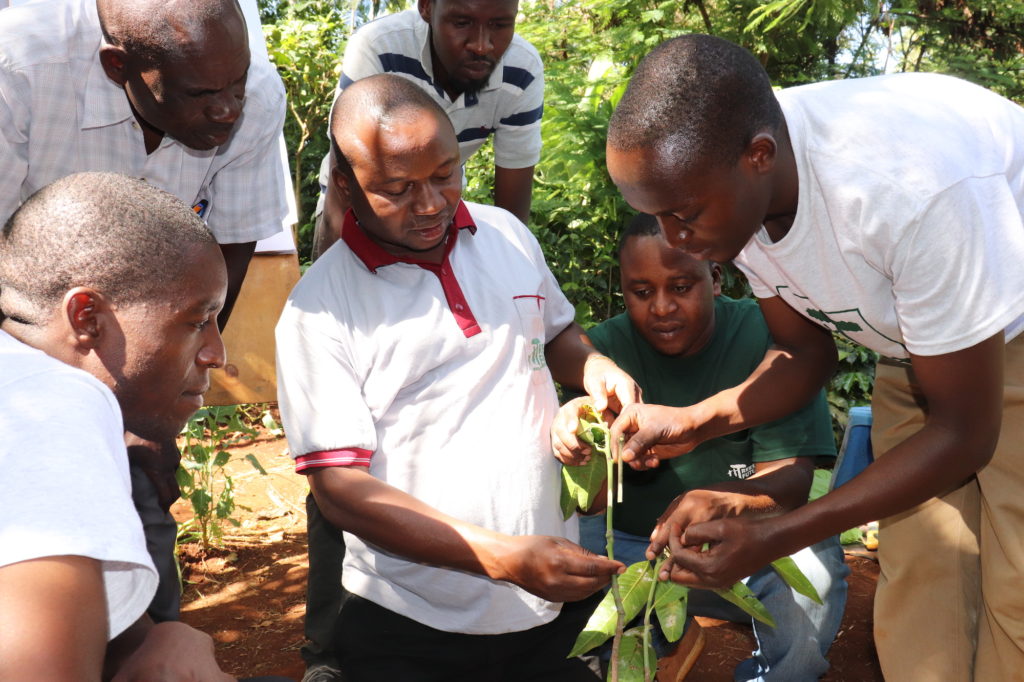
TREES Technicians practicing grafting a mango variety onto a hardy rootstock.
The next vital step is to choose the right varieties of trees and vegetables to plant in the Forest Garden. Factors to take into account include the season when a specific variety thrives and whether it is drought and disease resistant. For grafted fruit trees such as citrus and mangoes, the rootstock selection is as important as selecting the fruit variety you want to grow. Selecting tough, drought resistant rootstock will save you from years of pest problems later. There are many considerations for vegetables as well. Some different vegetables – and even different varieties of the same vegetable – do better in the dry season or rainy season. When you grow the wrong thing at the wrong time, it is usually prone to getting attacked! Onions, for example, usually offer both dry season and rainy season varieties. The rainy season variety can handle the increased prevalence of fungal infections while the dry season variety can handle the high temperatures and arid growing conditions. Planting the wrong variety at the wrong time invites problems.
Defense 3: Companion Planting and Permagardening
With companion planting, farmers grow more plants in the same space by leveraging complementary relationships among plants. Plants can be companions because they occupy space together well, they protect each other, or they grow better because of some beneficial interaction. Here is a great chart to help you find companions for vegetables you grow.
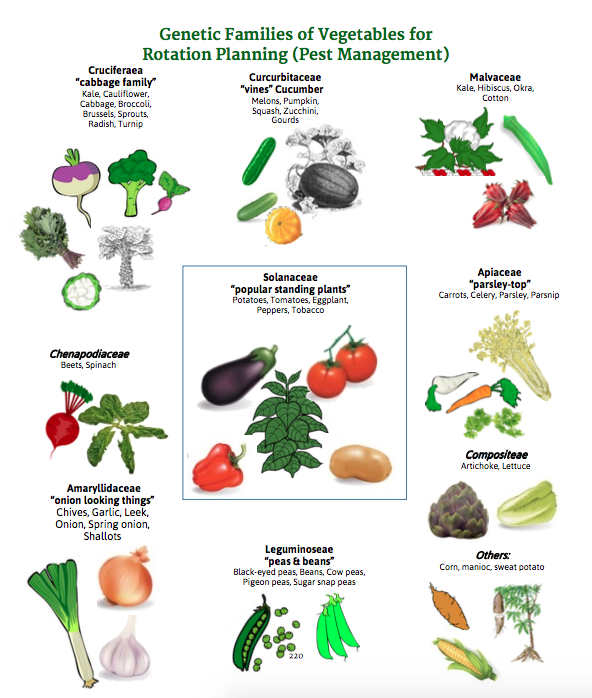
Companion planting is the gateway to permagardening. Start by growing two or three things together, and eventually you can build what is known as a guild in permagardening. A guild will have several species sustainably growing together in layers.
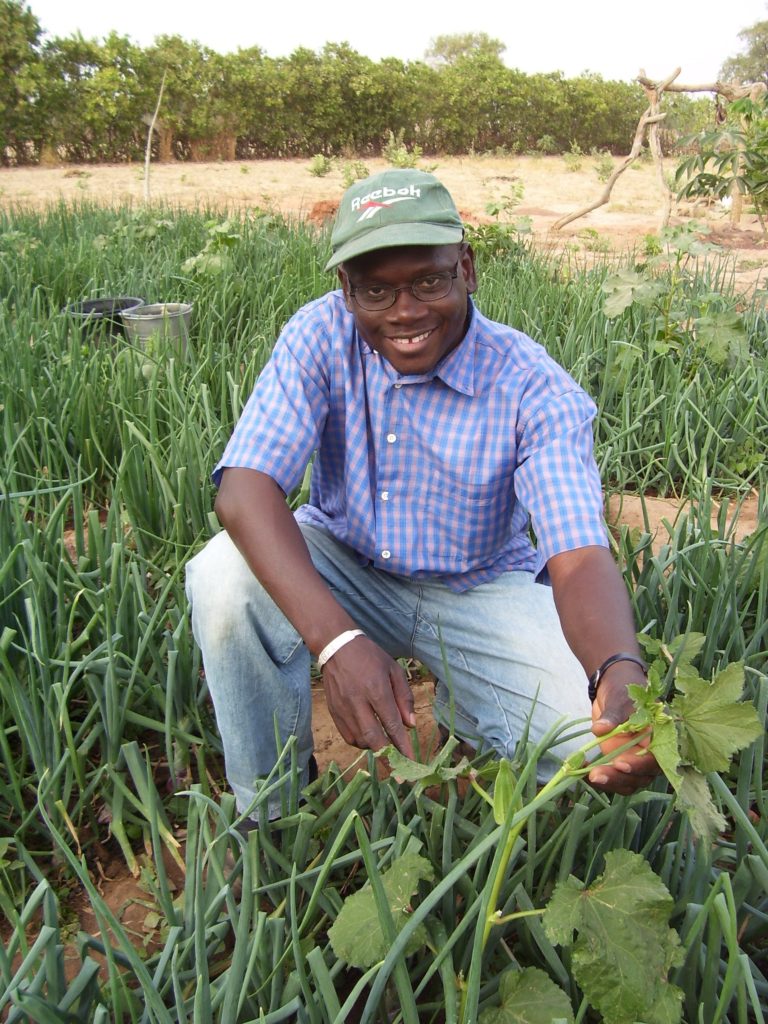
TREES West Africa Regional Director Mohamed Traore showing how onions protect okra from pests in Mali circa 2005.
Here are the seven components of a guild that we encourage farmers to plant together:
1. Food for us (that’s easy)
2. Food for the soil (something leguminous that fixes nitrogen or drops leaf litter)
3. Food for animals (can be anything: goats, cows, bees or butterflies)
4. Diggers (grow below the soil like potatoes or sweet potatoes)
5. Standers (they are many options such as tomatoes or okra)
6. Climbers (cucumbers or peas)
7. Protectors (such as scented herbs, basil, onions, hot pepper, marigolds)
Defense 4: Crop Rotation
While it is important for farmers to be market-driven, they cannot grow the same thing every year. Not only is crop rotation beneficial for the soil, it significantly reduces the potential of pest infestation by changing ‘food sources’ available to local bugs each year. Each pest has it’s food preferences. If you grow the same thing in the same place year after year, your pest problems will worsen and your soil will be depleted. By alternating crops, you continually disrupt the life cycle of insects and change the nutritional demand placed on soil. Here are some helpful resources to get you started. There is a prescribed method to rotations to account for nutritional needs of crop types.
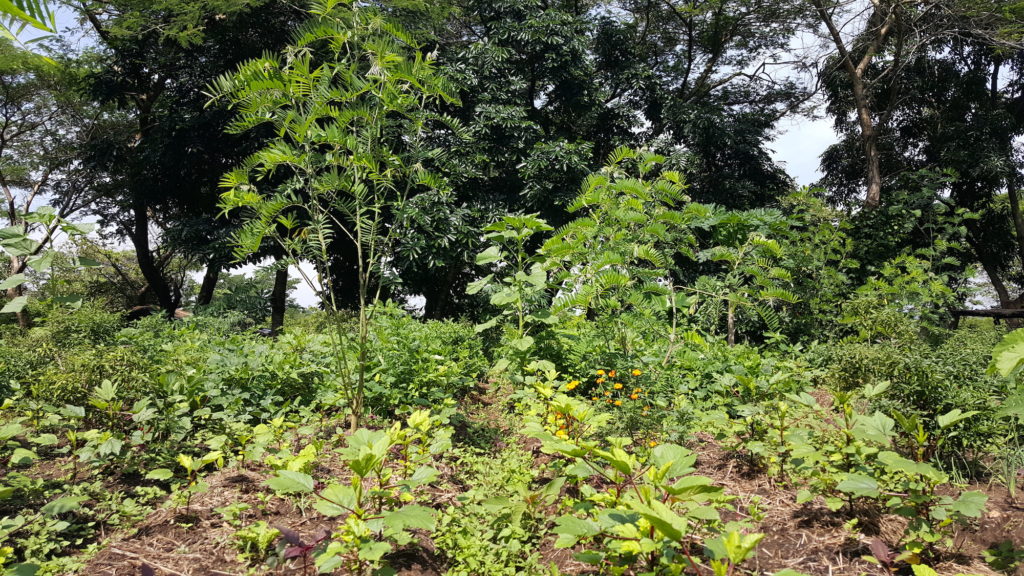
The permagarden at Kusamala Institute of Agriculture and Ecology in Malawi, 2017.
Defense 5: Keep Plants as Healthy as Possible & Welcome Natural Enemies
If you have done the first 4 lines of defense, then the next best thing farmers can do to deter pests is keep the soil and plants as healthy as possible. They should go on the offense rather than just building a defense for the farm. Farmers should learn to practice composting and every soil and water conservation described in the Forest Garden Technical Manual. Whereas chemical fertilizers just feed the roots of plants directly, we train our farmers to feed the soil with compost and organic material so the soil provides the roots of plants with a steady source of nutrients and moisture. Healthy plants will be more resilient to pests and diseases.
Defense 6: Farmer’s Footsteps and Field Sanitation
A farmer’s presence in the field is arguably one of the most important components of pest management. Farmers should constantly scout their field by walking different patterns around the farm throughout the growing season. As they scout their field, farmers should observe changes in plants and soil, and manually remove and destroy any insect pests they find. Farmers should look for clues of insect attacks, such as leaf damage or caterpillar poop. They must be sure to maintain clean field sanitation by pulling weeds and diseased or dying vegetation as well as pruning any damaged, diseased, or dead branches. Insects are often the vector for disease transmission on farms; by eliminating both the pests and the sick plants, we can minimize an outbreak.
Defense 7: Natural Remedies
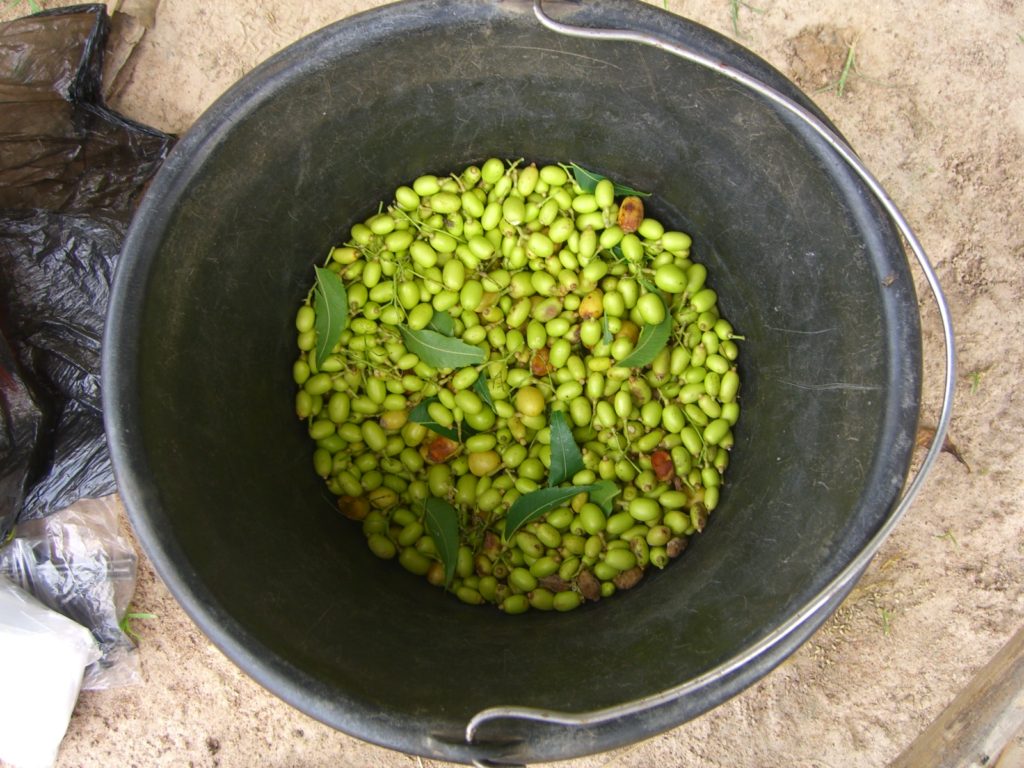
Azadirachta indica
If a farmer has implemented all of the components discussed above and still has an insect problem, the last line of defense entails natural remedies. Natural things such as ash, hot pepper, soap and even tobacco can either kill or chase away pests. Dusting infected areas with wood ash deters soft-bodied insects like termites. Neem trees are common across the developing tropics (Azadirachta indica is more potent than the other species) and have numerous active ingredients in their leaves and seeds, including azadirachtin which disrupts the life cycle of many pests but is harmless to humans.
Pesticides
We at Trees for the Future do not recommend the use of pesticides under any circumstances. Having worked in the developing world for nearly 30 years with thousands and thousands of farmers, we have *never* met a farmer who has the correct safety equipment to apply pesticides. We have, on the other hand, witnessed children drinking out of pesticide containers, and we have seen countless farmers apply toxic chemicals using their bare hands. For more information on why pesticides are awful, search for resources provided by the Pesticide Action Network.
Be an Agent for Change
In 2019 Trees for the Future celebrates 30 years of working to improve the lives communities across the developing world. In that time, we have seen how landscapes across Latin America, Africa and Asia are degrading and changing faster than farmers can keep up with. If we can help farmers across the developing world to put these 7 lines of defense in place against pests, then we can build permanent pest resilience into farms across the world in a way that is not only environmentally sustainable… but also environmentally regenerative.
You too can become a Certified Forest Garden Trainer capable of training farmers around the world to build the 7 Lines of Defense against pests! Learn more at the Forest Garden Training Center (training.trees.org)
 United States
United States
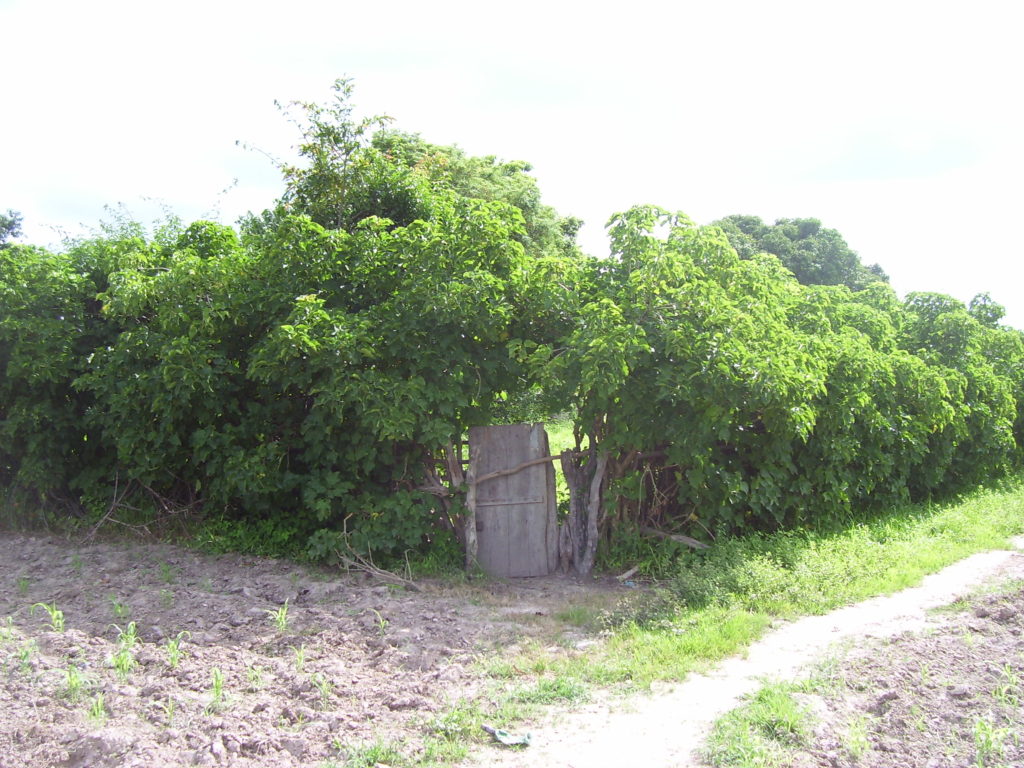
Comments